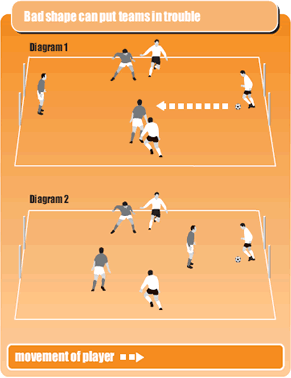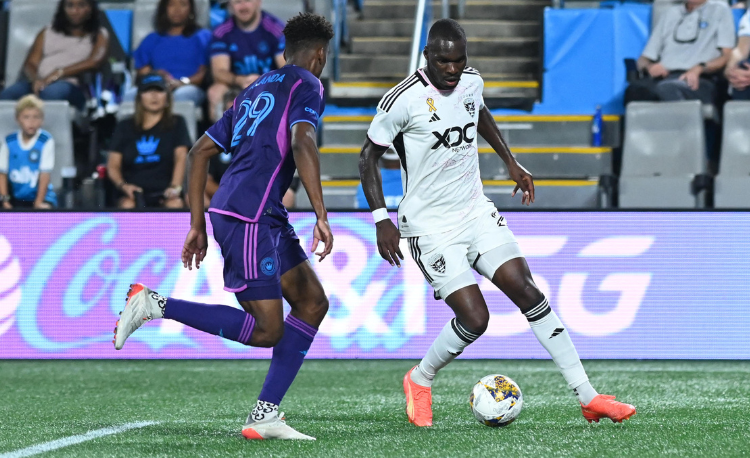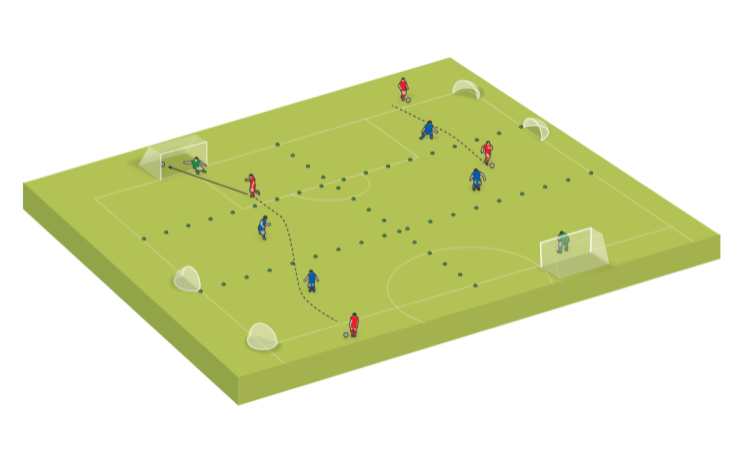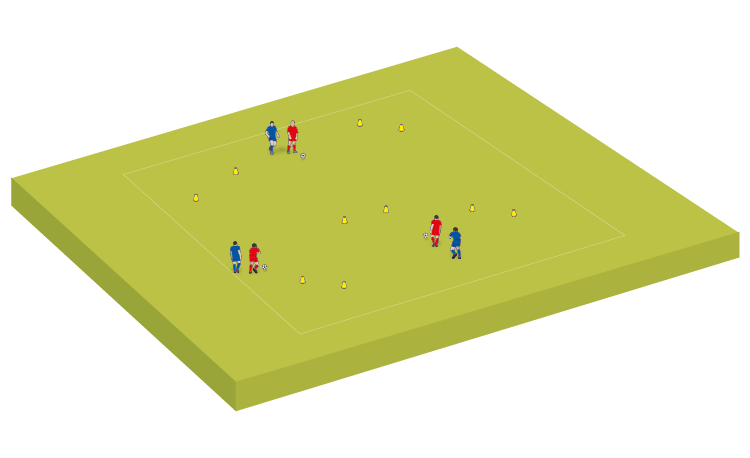Triangle tips and skills for small sided games
Small-sided gamesby Dave Clarke
Shapes are important in soccer and the strongest shape is the triangle, with a player at each corner.
Shapes are important in soccer and the strongest shape is the triangle, with a player at each corner. The following soccer coaching tips will help you make triangles work for your team.
Tips to coach triangle skills
You can beat anyone if you know how to make triangles work for you, but get it wrong and the triangles will fall apart.
Playing 3v3 brings up situations that often occur in small-sided and 11-a-side games. It illustrates how poor shape has an effect on the other players, making their own job much harder.
The triangular shape in midfield is very much something soccer coaches can use to great effect all over the pitch. But you must use it properly.
Have a look at these situations in the diagram and I will show you what I mean:
Diagram one
In the top situation in the diagram the white team have the ball and have to bring it out from their own goal. The grey team has adopted the shape of a triangle, however, the middle player has dropped back deep to protect his goal, in effect becoming a sweeper behind the other two grey team players.
This means that the white player bringing the ball out is unmarked and can either directly attack straight down the middle or create 2v1 situations with his team mates.
The two grey wingers have a problem. Do they mark their player or go towards the man with the ball?
By moving away from the player they are marking they leave themselves open to a simple wall pass and leave the goal at their mercy. If they stay, this creates a 1v1 directly in front of their own goal. Or the white player can elect to move towards one of his teammates creating a 2v1.
Diagram two
In the bottom diagram the grey team is still in a triangle but the middle player has moved up to the man on the ball. This gives the man on the ball an immediate problem as he tries to bring the ball out. He is under pressure to pass the ball because he dare not dribble past him.
Passing is difficult so the grey team are more likely to win the ball. The grey player can also force the player to pass one way or another by moving slightly to one side, forcing a pass and allowing a grey team mate to intercept.
Coaches Testimonials

Gerald Kearney, Downtown Las Vegas Soccer Club

Paul Butler, Florida, USA

Rick Shields, Springboro, USA

Tony Green, Pierrefonds Titans, Quebec, Canada
Small-sided games
Discover the simple way to become a more effective, more successful soccer coach
In a recent survey 89% of subscribers said Soccer Coach Weekly makes them more confident, 91% said Soccer Coach Weekly makes them a more effective coach and 93% said Soccer Coach Weekly makes them more inspired.
*includes 3 coaching manuals
Get Weekly Inspiration
All the latest techniques and approaches
Soccer Coach Weekly offers proven and easy to use soccer drills, coaching sessions, practice plans, small-sided games, warm-ups, training tips and advice.
We've been at the cutting edge of soccer coaching since we launched in 2007, creating resources for the grassroots youth coach, following best practice from around the world and insights from the professional game.






